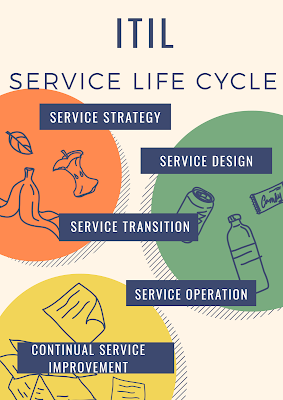RPM Package Management
Introduction:
In this blog i am going to explain RPM Package Management, RPM is a default open source and most popular package management utility for Red Hat based systems like RHEL,CENTOS and FEDORA)
The Red Hat Enterprise linux system divided into RPM packages which can be installed ,upgraded or removed,all softwares on a Red Hat Enterprise linux system is divided into RPM packages
The tool allows linux system administrators and users to install,update,uninstall,query,verify and manage system software packages in unix/linux operating systems.RPM package file name will be .rpm
.rpm file that includes compiled software programs and libraries needed by the packages,
- RPM is a free and easily downloaded from rpm sites ,released under the GPL(General public Licence)
- RPM keeps the information of all the installed packages under this directory /var/lib/rpm database
- RPM is the only way to install under the linux/unix systems to update the packages
- RPM deals with the .rpm file swhich contains the information about the packages such as dependies info,version info
There are five commands mostly used in linux/unix for RPM Package Management
- Install : it is used to install any RPM package .rpm file
- Remove:it is used to remove or uninstall the RPM packages
- Upgrade: it is used to upgrade the existing RPM package in linux/unix systems
- Verify : it is used to verify the RPM packages in linux/unix systems
- Query:it is used to query any RPM package
Below are the websites you can find and download RPM Package Management
Now Let us start the process RPM Package Management
RPM is a popular utility for installing software on unix/linux systems
Step 1: Log in as root user on which you want to install the software you can manage the RPM commands by using root user privileges
Step 2: Download the RPM package you wish to install the package named some thing like java rpmpackage name jre-8u111-linux-i586.rpm,the file name include version (1.0,8), release(1,u111) and architecture is (i386,i586)
Step 3: Check the PGP signature of packages before installing them on your linux systems make sure the integerity and origin is correct by using the following command checksig(check signature)option to check signature of a package called pidgin
[root@chaitanyaoracledba]# rpm --checksig jre-8u111-linux-i586.rpm
jre-8u111-linux-i586.rpm: rsa sha1 (md5) pgp md5 OK
INSTALL A PACKAGE
[root@chaitanyaoracledba]# rpm - Uvh jre-8u111-linux-i586.rpm
Preparing... ########################################### [100%]
1:jre1.80_111 ########################################### [100%]
RPM commands and options
- -i : install a package
- -v : verbose for a nicer display of package
- -h: print hash marks as the package archive is unpacked.
If a package with same name and version is already installed below output will show like this
[root@chaitanyaoracledba]# rpm - Uvh jre-8u111-linux-i586.rpm
Preparing... ########################################### [100%]
package jre1.8.0_111-1.8.0_111-fcs.i586 is already installed
However if you want to install the package anyway, youcanuse --replacepkgs option
[root@chaitanyaoracledba]# rpm - ivh --replacepkgs jre-8u111-linux-i586.rpm
Preparing... ########################################### [100%]
1:jre1.8.0_111 ########################################### [100%]
Force, option which tells RPM to ignore the error
[root@chaitanyaoracledba]# rpm - ivh jre-8u111-linux-i586.rpm -- force
Preparing... ########################################### [100%]
1:jre1.8.0_111 ########################################### [100%]
If you attempt to install a package that contains a file which already been installed by another package below output show like this
[root@chaitanyaoracledba]# rpm-Uvh foo-1.0-1.i386.rpm
Preparing... ... ########################################### [100%]
file /usr/bin/foo from install of foo-1.0-1 conflicts with file from package bar-2.0.20
To make RPM ignore this error ,use the replacefiles option
[root@chaitanyaoracledba]# rpm-ivh--replacefiles foo-1.0-1.i386.rpm
RPM packages may sometimes depend on other packages which requires other packages to be installed on the linux/unix system
if u try to install a package which has an unresolved dependency package the below output shows like this
error : Failed dependencies:
bar.so.2 is needed by foo-1.0-1
suggested resolutions:
bar-2.0.20-.i386.rpm
If you are installing a pacakage ,it usually suggest the package needed to resolve the dependency
Download suggested packages from redhat sites and add it to the command
rpm -ivh foo-1.0-1.i386.rpm bar-2.0.20-3.i386.rpm
if both the packages are installed sucessfully it will show like this
Preparing... ... ########################################### [100%]
1:foo ########################################### [100%]
2 :bar ########################################### [100%]
if it does not suggest a package to resolve the dependency ,you cantry the --redhatproviders option to determine which package contains the required file
[root@chaitanyaoracledba]# rpm -q --redhatproviders bar.so.2
you need the rpmdb-redhat package installed to use this option
bar-2.0.20-3.i386.rpm
To force the installtion anyway,use the -nodeps option
[root@chaitanyaoracledba]# rpm-ivh foo-1.0-1.i386.rpm --nodeps
UNINSTALL A PACKAGE
To remove the uninstall package use the - erase option
[root@chaitanyaoracledba]# rpm - e jre1.8.0_111
UPGRADE A PACKAGE
To upgarde the package RPM automatically uninstalls any old versions use the -U option will install a package when there are no previous versions of the package installed
[root@chaitanyaoracledba]# rpm - Uvh jre-8u111-linux-i586.rpm
FRESHENING A PACKAGE
Freshning a package similar to upgrading except that only existing packages are upgraded below is the command
[root@chaitanyaoracledba]# rpm - Fvh jre-8u111-linux-i586.rpm
QUERY DATABASE
To query this database use the -q option ,The rpm -q package name command displays the package name,version,and relese number of the installed package name
[root@chaitanyaoracledba]# rpm -q jre1.8.0_111
jre1.8.0_111-1.8.0_111-fcs.i586
Check all the installed package on the system
[root@chaitanyaoracledba]# rpm -qa
check whether particular package is installed or not
[root@chaitanyaoracledba]# rpm -q jre1.8.0_111
jre1.8.0_111-1.8.0_111-fcs.i586
Check a package is consistent or not before installing it
[root@chaitanyaoracledba]# rpm -ivh --test jre-8u111-linux-1586.rpm
Preparing... ########################################### [100%]
To see the information about the installated package use below command to show
[root@chaitanyaoracledba]# rpm -qi jre1.8.0_111
To see the configuration file of the installed package use below command to show
[root@chaitanyaoracledba]# rpm -qlc jre1.8.0_111
To see the directory with which a particular package is associated
[root@chaitanyaoracledba]# rpm -qld jre1.8.0_111
Note : Info on RPM Package Management it may be differ on your environment like development,testing,production and naming conventions etc
THANKS FOR VIEWING MY BLOG FOR MORE UPDATES FOLLOW ME AND SUBSCRIBE ME



No comments:
Post a Comment